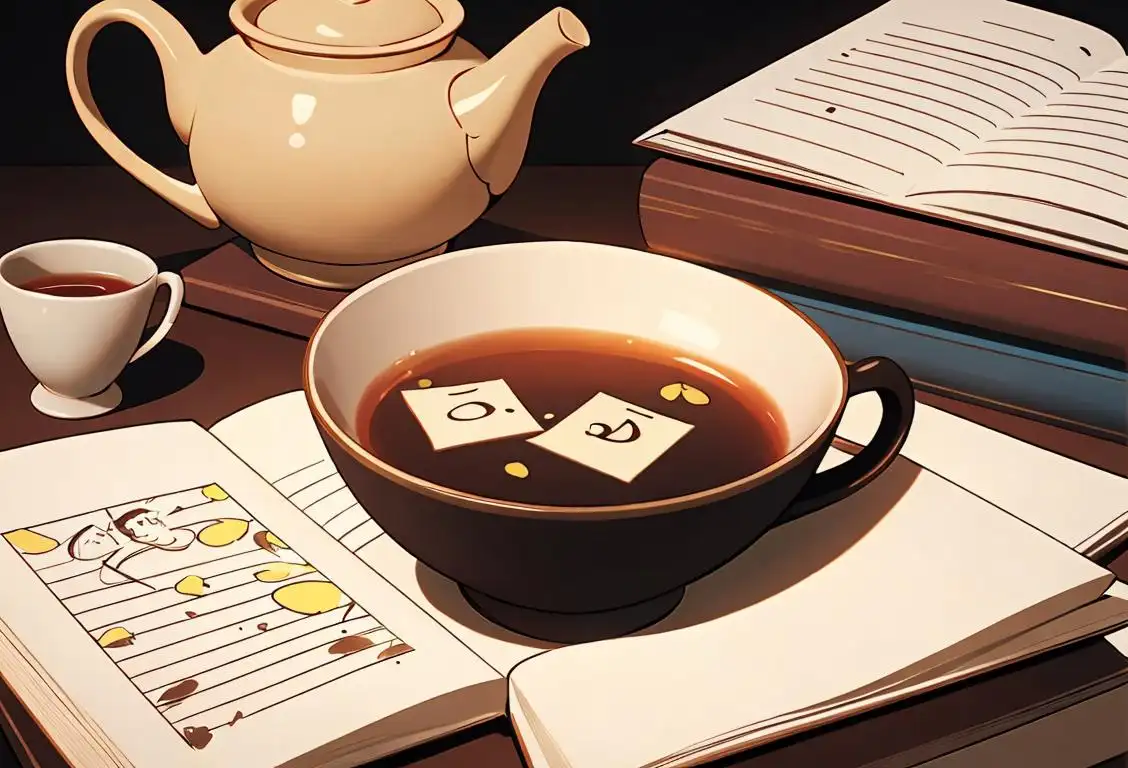National Mole Day

Welcome to National Mole Day! Get ready to celebrate this quirky holiday dedicated to praise the mighty mole. No, we are not talking about the cute little furry creatures that burrow in our backyards and terrorize our gardens. Grab your lab coat and calculator because we are about to dive into the fascinating world of Avogadro's number and all things mole-related!
When is Mole Day?
It's national mole day on the 23rd October.
The Origins of National Mole Day
National Mole Day officially started in 1991, thanks to a chemistry teacher named Maurice Oehler. He wanted to create a day dedicated to fostering interest and excitement in chemistry among his students. The date chosen for this scientific celebration is October 23rd, representing the approximate value of Avogadro's number, which is 6.02x10^23.
On this special day, chemistry enthusiasts, students, and educators from all over the world come together to honor the wonders of this fundamental unit in chemistry.
The Significance of Avogadro's Number
Avogadro's number, named after the Italian scientist Amedeo Avogadro, represents the number of atoms or molecules in one mole of any substance. A mole is defined as the amount of a substance that contains as many elementary entities as there are atoms in 12 grams of carbon-12. Did your brain just turn into a molehill? Don't worry; we'll break it down for you. Basically, Avogadro's number helps scientists convert between the atomic scale and the macroscopic scale when dealing with substances.
This number has had a significant impact on the development of chemistry, allowing scientists to understand the composition, properties, and behavior of matter at the atomic level. It's like the secret language spoken by chemists worldwide.
How to Celebrate National Mole Day
Now that we have explained the theory behind National Mole Day, let's talk about the fun stuff! Celebrating this scientific holiday doesn't require a PhD in chemistry. Here are a few ideas to get you started:
- Create mole-themed decorations using stuffed moles, mole-shaped balloons, and mole pictures. Let your creativity flow like a chemical reaction!
- Host a mole-themed potluck where all the dishes are named after famous chemists or scientific concepts. How about some Marie Cure-ry or a Newton's Noodle Salad?
- Organize chemistry-related games and quizzes to test your friends' knowledge of elements and compounds. Show off your inner science nerd!
Did You Know?
Did you know that moles are not just a unit in chemistry? In the world of biology, a mole refers to a small, dark-colored spot or growth on the skin, often caused by a cluster of pigment cells. So, make sure to protect your skin while celebrating National Mole Day and avoid any moles of the non-chemical variety!
History behind the term 'Mole'
3000 BCE
Early Beginnings
The term 'mole' traces its origins back to ancient civilizations. In 3000 BCE, the Olmec civilization of Mesoamerica discovered cocoa beans and began using them to prepare a bitter beverage called 'xocoatl.' This beverage was an integral part of their culture and was often referred to as 'mollē,' which translates to 'ground or puree' in Nahuatl, their native language.
16th Century
Spanish Influence
In the 16th century, Spanish conquistadors encountered the native Mesoamerican cocoa drink during their explorations. They adapted the term 'mollē' into 'mole' and integrated it into their own cuisine. The Spaniards transformed the bitter beverage into a savory sauce by adding various spices, nuts, seeds, and a hint of chocolate. This sauce, known as 'mole,' became an iconic and distinct element of Mexican cuisine.
19th Century
Refinement and Diversification
During the 19th century, Mexican cuisine underwent a period of refinement and diversification. Different regions in Mexico began developing unique variations of mole, each distinguished by its combination of ingredients and preparation methods. Notable varieties include mole poblano, mole verde, mole negro, and mole amarillo. These moles became staples in Mexican households and are still celebrated today for their richness and complexity of flavors.
21st Century
Global Recognition
In the 21st century, mole has gained international recognition and popularity. Chefs worldwide have embraced the versatile sauce, incorporating it into their own culinary creations and menus. Mole festivals are held in different parts of Mexico and the United States, drawing enthusiasts from various cultural backgrounds. Mole has become a symbol of cultural fusion, representing the blending of Indigenous, Spanish, and global influences in the world of gastronomy.
Did you know?
Did you know that moles are not just a unit in chemistry? In the world of biology, a mole refers to a small, dark-colored spot or growth on the skin, often caused by a cluster of pigment cells. So, make sure to protect your skin while celebrating National Mole Day and avoid any moles of the non-chemical variety!Tagged
awareness fun education scienceFirst identified
23rd October 2015Most mentioned on
23rd October 2015Total mentions
803Other days
Periodic Table Day
Dna Day
Fossil Day
Mole Day
Stem Day
Student Athlete Day
Punctuation Day
School Nurse Day
Education Day
Grammar Day








